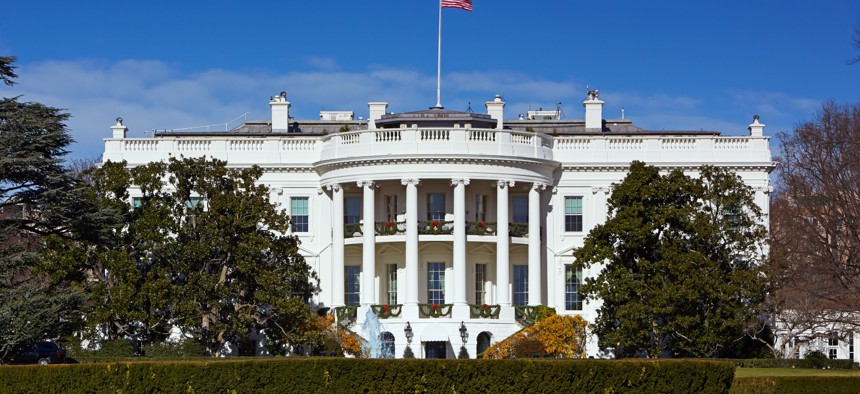Biden's 2023 budget includes $65B for civilian agency IT

Allan Baxter/Getty Images
The White House is looking for a $300 million boost for the Technology Modernization Fund and big increases in cyber and IT spending across the board.
The Biden administration's $1.58 trillion discretionary budget request for fiscal year 2023 includes increases in IT and cyber spending, another boost for the Technology Modernization Fund and more.
Budget documents released on Monday include IT and cybersecurity spending at federal civilian agencies. Top-line breakouts of defense spending in tech categories is forthcoming.
In the IT arena, the White House is seeking $65 billion in IT spend across civilian agencies, an 11% increase from the overall figure reported for 2022.
Within that, the budget request is looking for $10.9 billion for federal civilian cybersecurity capabilities, also an 11% increase.
The White House says that these investments will align with the cybersecurity executive order released last spring. Among other priorities, the funding will support the ongoing move to zero trust and fund the new Office of the National Cyber Director, the White House says.
The administration is also looking for a $300 million boost for the Technology Modernization Fund.
The fund did not get any increase in the recently passed appropriations package, although it did receive a $1 billion boost via the American Rescue Plan Act in 2021.
“With the continuously evolving IT and cyber landscape, these investments are an important down payment on delivering modern and secure services to the American public, and continued investment in IT will be necessary to ensure the United States meets the accelerated pace of modernization,” the White House says.
The General Services Administration, which manages the TMF, noted in their budget request that since the $1 billion plus-up under the American Rescue Plan legislation the board has fielded more than 120 funding proposals totalling $2.5 billion in requests. The board has awarded $311 million across seven projects since the new funding. GSA expects more new investment rounds to be announced this year.
The budget request also includes $115.7 million for the Federal Citizen Services Fund, which saw its operational rules updated in the omnibus appropriations bill that passed earlier this month. Last November, GSA announced $150 million in new commitments made by the fund.
Defense tech
The Biden administration's $773 billion budget request and supporting documents didn't include a top-line number for information technology. DOD's cyberspace spending was listed at $11.2 billion, according to a Pentagon fact sheet. Research, development, testing and evaluation spending topped $130 billion – about 17% of the overall defense budget request – and includes $16.5 billion for science and technology innovation, nearly $5 billion for hypersonics, and $3.3 billion in microelectronics and 5G infrastructure. Biotechnology investments were called out at $1.3 billion.
Agency spending
The Departments of Homeland Security and Veterans Affairs lead the pack when it comes to civilian IT spending, requesting $10 billion and $8.6 billion respectively. The DHS figure represents a 17% increase over the 2022 request. VA is in line for a 2% increase. The VA's tech budgets have vastly increased in recent years to accommodate the Electronic Health Record Modernization effort.
The General Services Administration is seeking a 39.17% increase over last year’s request to total $977 million. For Agriculture, a 41.63% increase to $3,912 million. And for the Small Business Administration is a 170% increase from $109 million in 2022 to $295 million in 2023.
The request for the Office of Personnel Management is a 200% increase, hiking the FY 2022 request for $141 million up to $423 million.
Customer experience, workforce and other priorities
The budget request also outlines requests to support efforts underway via the President’s Management Agenda and an executive order released last year on customer experience, both of which direct agencies to organize services around “life experiences” rather than agency boundaries or funding streams.
The budget request includes funding for these cross-agency priorities via interagency teams and for specific agencies designated as “high impact service providers.” The Department of Education’s Office of Federal Student Aid, for example, is getting $2.7 billion for customer experience improvements.
Filling in the IT and cyber workforce in government is another priority the budget outlines, saying that “the Administration is committed to investing in the Federal workforce to ensure they are equipped to adapt and develop their skills” and that “the Government will continue to evaluate processes and practices related to recruiting, hiring, and retention, as well as applying the lessons learned from the COVID-19 pandemic.”
One continuing priority is overhauling the security clearance process, something that top officials have already signaled is due for progress this year. The White House says that its budget request “supports agencies continuing preparations” to implement reforms to the vetting system.
The continued use of the Quality Service Management Organization (QSMO) approach, where agencies act as storefronts for IT solutions and services, is also evident in the budget request, which states that remaining QSMOs “are working to release their marketplaces as soon as possible, potentially as early as FY 2023.”
Another priority in the budget is the unemployment program and the increased levels of fraud within it since the onset of the pandemic. The budget request asks for $3.4 billion for modernization efforts and work around fraud like better identity verification tools.
This is a developing story and will be updated throughout the day.
NEXT STORY: Software Certification Could Get A Little Simpler Under Evolving DARPA Project






